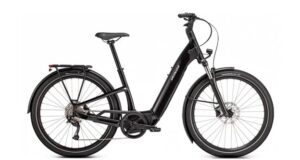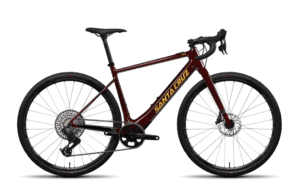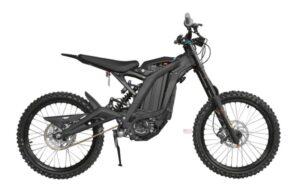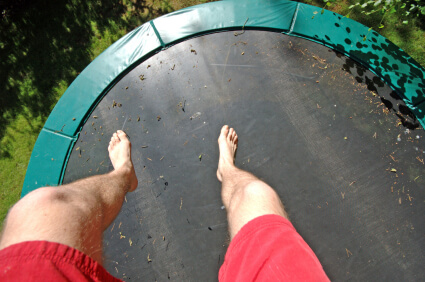Love them or hate them, e-bikes are all the rage in 2025. They allow you to go further, keep up with faster riders, and find a new level of enjoyment from biking.
While e-bikes are great tools for increasing physical activity and promoting inclusion within the sport of cycling, they can also be dangerous! Effortlessly reaching speeds of 25+ miles per hour poses serious safety risks—not just for riders, but for everyone on the road.
This blog breaks down the three e-bike classifications recognized in Michigan, outlines where each type is legally allowed to ride, covers state regulations, and offers practical safety tips to help you ride smart and safe.
E-Bike Classifications Explained
Within Michigan, there are three classifications of e-bikes. These classifications are the result of an initiative started by PeopleForBikes, which aims to update and standardize state laws governing the use of electric bicycles. As of July 2023, 48 states have incorporated e-bikes into their traffic codes and regulated them (similar to non electric-bikes).
The three classes of e-bikes in Michigan are appropriately named class 1, 2, and 3 e-bikes. Below is a brief description of what constitutes each e-bike class and what a typical bike within each class looks like.
Class 1 E-Bikes: Pedal-assisted only, up to 20 miles per hour – Equipped with a motor that provides assistance only when the rider is pedaling and disengages or ceases to function when the bike reaches a speed of 20 miles per hour.

Class 2 E-Bikes: Throttle- and pedal-assisted, up to 20 miles per hour – Equipped with a motor that propels the bike, whether the rider is pedaling or not, to a speed of no more than 20 miles per hour, and disengages or ceases to function when the brakes are applied or throttle is released. Has throttle and pedal assist.

Class 3 E-Bikes: Pedal-assisted only, up to 28 miles per hour – Equipped with a motor that provides assistance only when the rider is pedaling and disengages or ceases to function when the bike reaches a speed of 28 miles per hour.

You might be wondering – what’s the difference between pedal-assisted and throttle-assisted motors? The answer is simple. All e-bikes are pedal assisted (by law). If the bike you are on lacks pedal assist (pedaling makes the motor engage), it is likely not what Michigan law would consider an e-bike.
Class 2 e-bikes are the only classification of e-bikes within Michigan that feature throttle-assist (a hand lever that makes the motor engage), in addition to their pedal-assist functionality. Sur-Ron style e-dirt-bikes (that feature no bottom bracket, cranks, or pedals) are not classified as e-bikes in Michigan and instead are considered motor vehicles (which are regulated completely differently).

Where You Can Ride Each Type in Michigan
Potentially more confusing than the classifications themselves are the regulations determining where you can (and cannot) ride each class of e-bike. Here is a breakdown of where each type is specifically allowed (and prohibited).
Roadways: You can ride an e-bike on all of the same city, state, and county roads that you are allowed to ride a regular bike on – just be sure to follow all the legal guidelines for safely operating a bicycle in traffic.
State Trails: State (Michigan DNR) managed trails like the Iron Belle and Huron River Water Trail are subject to specific e-bike regulations. On trails such as these, you are allowed to ride class 1 e-bikes and class 2 e-bikes (if you obtain a mobility issues permit through the DNR). Class 3 e-bikes are prohibited from being used on these trails.
Local Trails: Local trails may have their own regulations that differ from those managed by the Michigan DNR. An example would be the extensive trail system at Stoney Creek Metro Park, which is managed by the Huron-Clinton Metroparks system. The guidelines for operating e-bikes in Metroparks like Stoney Creek are as follows:
- Class 1 and 2 e-bikes are allowed on all paved hike-bike trails
- Class 1 e-bikes are allowed on Authority-designated mountain bike trails within the Metroparks
- No specific rules or regulations regarding class 3 e-bikes
It’s important to understand the rules and regulations of your locally maintained trail before you take your e-bike out for a ride. Calling and inquiring with the managers responsible for your local trail is a great way to see if your e-bike falls within guidelines.
Federal Trails: Michigan is home to several federally managed lands that are subject to their own e-bike regulations. National forests such as the Hiawatha National Forest and the Ottawa National Forest allow for e-bikes on all roads and trails designated for motorized use, but prohibit their use on non-motorized trails.
National parks like Sleeping Bear Dunes National Lakeshore follow different regulations from National forests. Here, e-bikes are allowed everywhere bicycles are allowed, but the use of a throttle-assist (like on a class 2 e-bike) is prohibited.
It would be wise to check the rules and regulations surrounding e-bikes, before going for a ride at a federally managed forest or park in Michigan.
Special Consideration (Mackinac Island): E-bikes unfortunately are not allowed on Michigan’s beloved Mackinac Island. Mackinac has famously banned the use of all motorized vehicles on the island, making it a worldwide destination for bicycle enthusiasts. No exception to this ban is made for e-bikes. The only way to legally ride an e-bike on Mackinac is to obtain a permit from local authorities (only granted to individuals with mobility disabilities).
Legal Requirements in Michigan
There are very few legal requirements one must go through in order to ride an e-bike in the state of Michigan. There is no minimum age requirement, license requirement, or gear requirement for class 1 or 2 e-bikes. Class 3 e-bikes present some very minimal legal requirements – having a minimum operation age of 14 years old, and a helmet requirement for all riders 14-18 years old.
Safety Tips for Riding an E-Bike
Riding an e-bike requires the same attention and commitment to safety that riding a normal bicycle does – and then some. E-bikes accelerate quickly, cruise at high speeds, and often are ridden by individuals without a ton of bicycle experience. Here are a few practical tips to help stay safe while riding an e-bike:
- Always wear a helmet when possible
- Follow all traffic laws if riding in the road
- Always yield to oncoming pedestrians
- Regularly service your e-bike (especially your brakes!)
- Wear reflective clothing if you plan to bike near a busy road at night
- Let someone know where you are headed before you go out for a ride
- Bring plenty of water (and even some snacks) if you plan to go for a long ride
In addition to these tips, another recommendation for new e-bike riders is to beware of cheaply made e-bikes. While established brands like Giant, Trek, and Specialized all make high quality, reputable e-bikes, the same cannot be said for all of their competitors (especially e-bike specific brands). These e-bike specific brands (like many of those found on Amazon) often lack the craftsmanship and knowhow that more reputable bicycle brands have. These manufacturers will cut corners and outfit bicycles with cheap parts that quickly need to be serviced and replaced.
No matter the brand or model, it is a good idea to take your new e-bike into a local bike shop for an assembly inspection and to get a game plan for routine maintenance together. Many bicycle accidents happen as the result of perfectly avoidable component failures. It’s crucial to regularly service your bike so it is not only comfortable, but safe to ride.
Get David Get Paid
If you or a loved one was recently involved in a bicycle accident, give us a call at 855-65-CRASH, today! The team at Femminineo Law is amongst the best personal injury attorneys in the state of Michigan. You can rest assured that with the Femminineo Law team on your case, you will get the compensation you deserve.
Get David, Get Paid!



